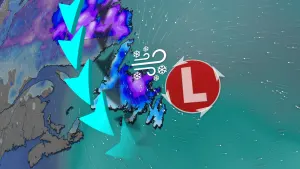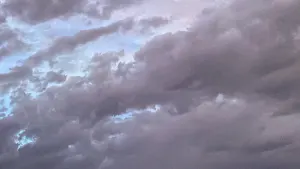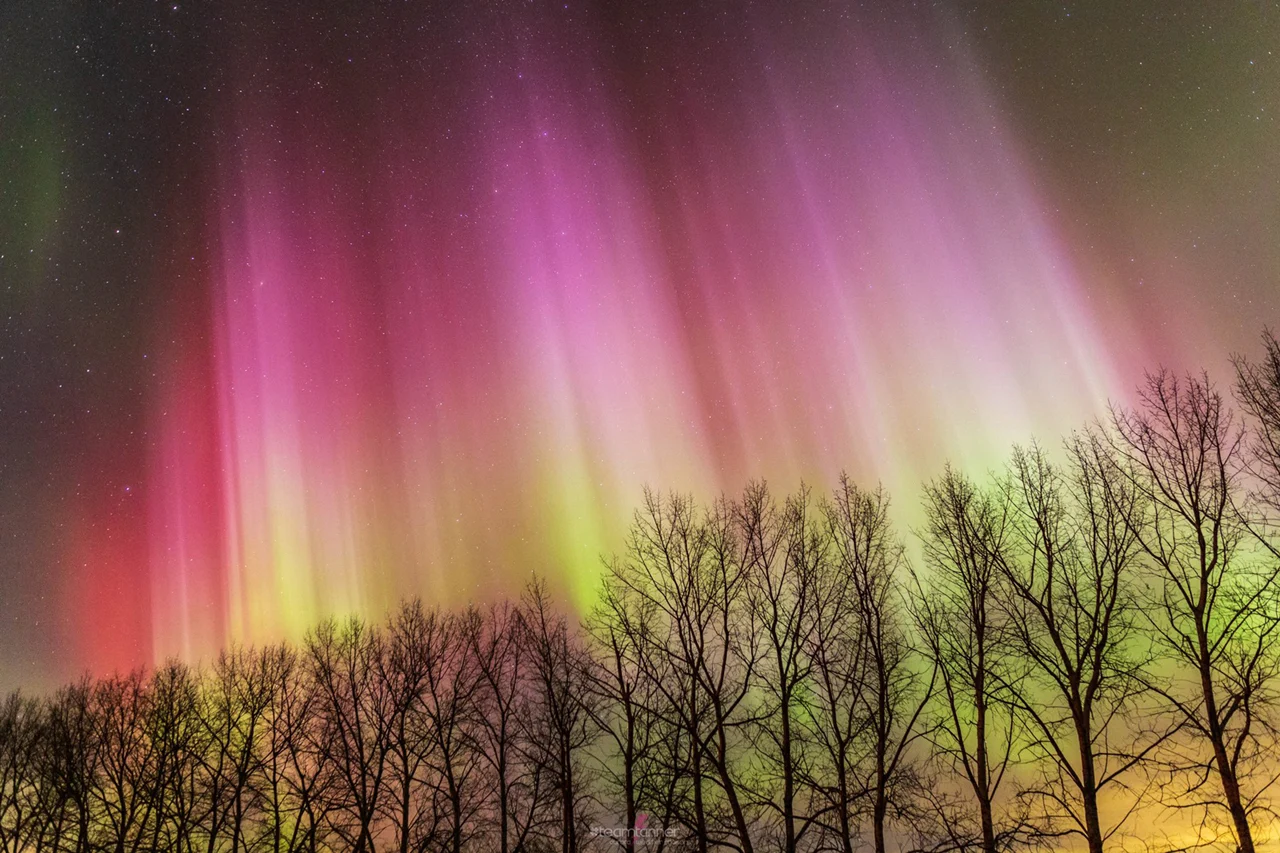
Eyes to the sky! Auroras may spark across Canada tonight
Check your weather forecast for clear skies and find a dark place to view from, as some turbulent space weather may produce more auroras tonight.
A solar storm sweeping past Earth produced displays of the Northern Lights on Monday night, and there may be a repeat performance tonight!
Solar activity has ramped up quite a bit over the past few years, as the Sun progresses in its latest solar cycle. This has meant seeing more sunspots on the Sun's surface, as well as the explosion of more and more powerful solar flares, and the eruption of coronal mass ejections ('solar storms') into space.
As a result of this increased space weather activity, we are also seeing more displays of the Northern Lights, aka the Aurora Borealis.
Over the weekend, a sunspot known as Active Region 3110 blasted out a moderately strong M5.9-class solar flare. The release of energy caused a coronal mass ejection to erupt from that location as well, which then expanded away from the Sun.
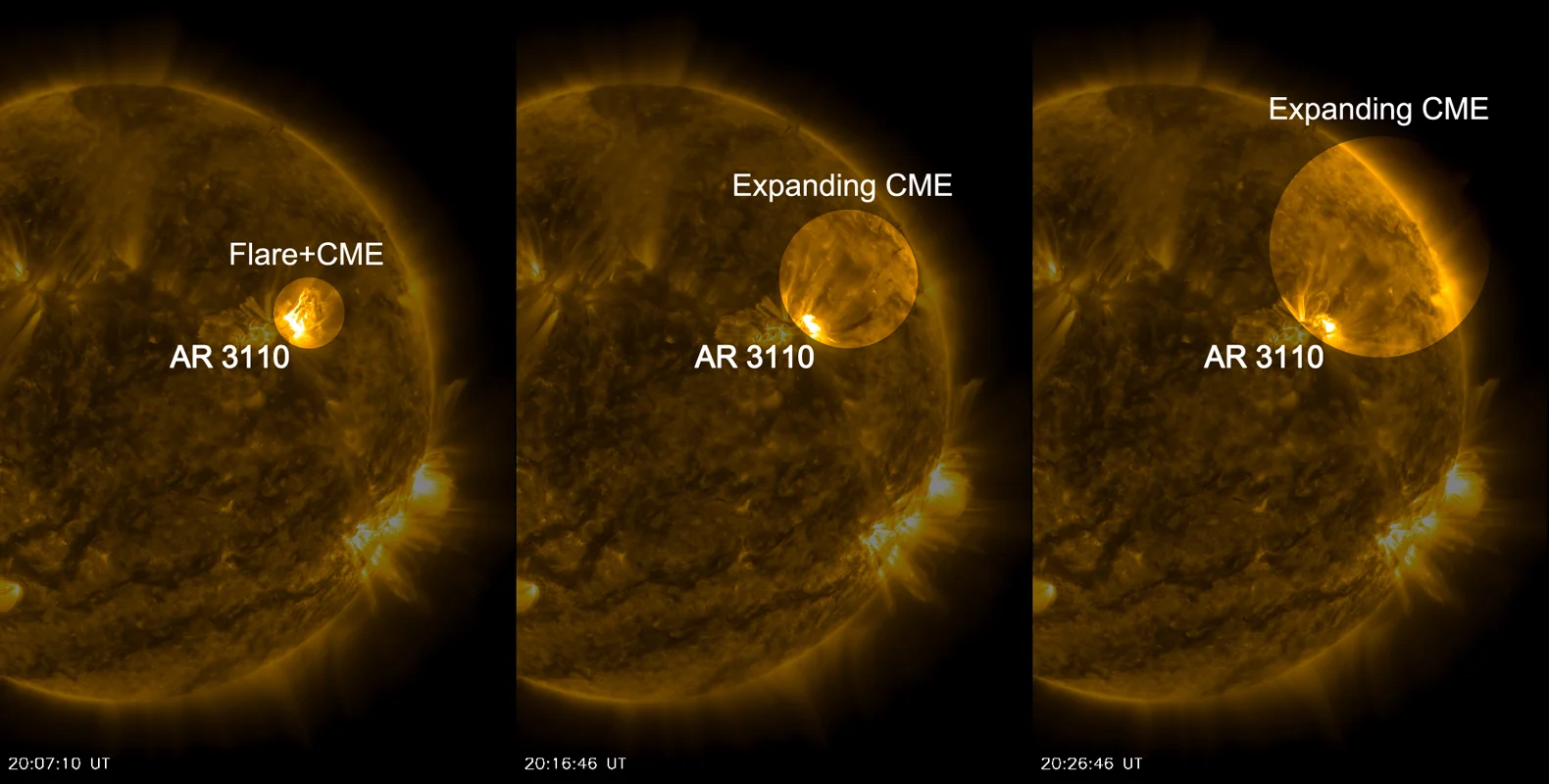
The Sun, as imaged by NASA's Solar Dynamics Observatory on October 1, 2022, shows the tangles of magnetic coronal loops that denote the location of sunspots. The three frames cover roughly 20 minutes of time, from the M5.9-class solar flare until the resulting CME becomes difficult to see against the bright backdrop of the Sun. Credit: NASA SDO/Scott Sutherland
Space weather forecasters tracked the progress of this CME, predicting that it would sweep past Earth sometime late on October 3 or early on October 4.
As it arrived, the immense cloud of solar matter scored a glancing blow on Earth's magnetic field, sparking a geomagnetic storm. NOAA's Planetary K-index, which estimates the geomagnetic activity around the planet, logged this as a G1 (minor) geomagnetic storm (Kp=5). Although this was a weaker storm than was predicted in their forecast, it still produced an impressive band of auroras across northern Canada on Monday night.
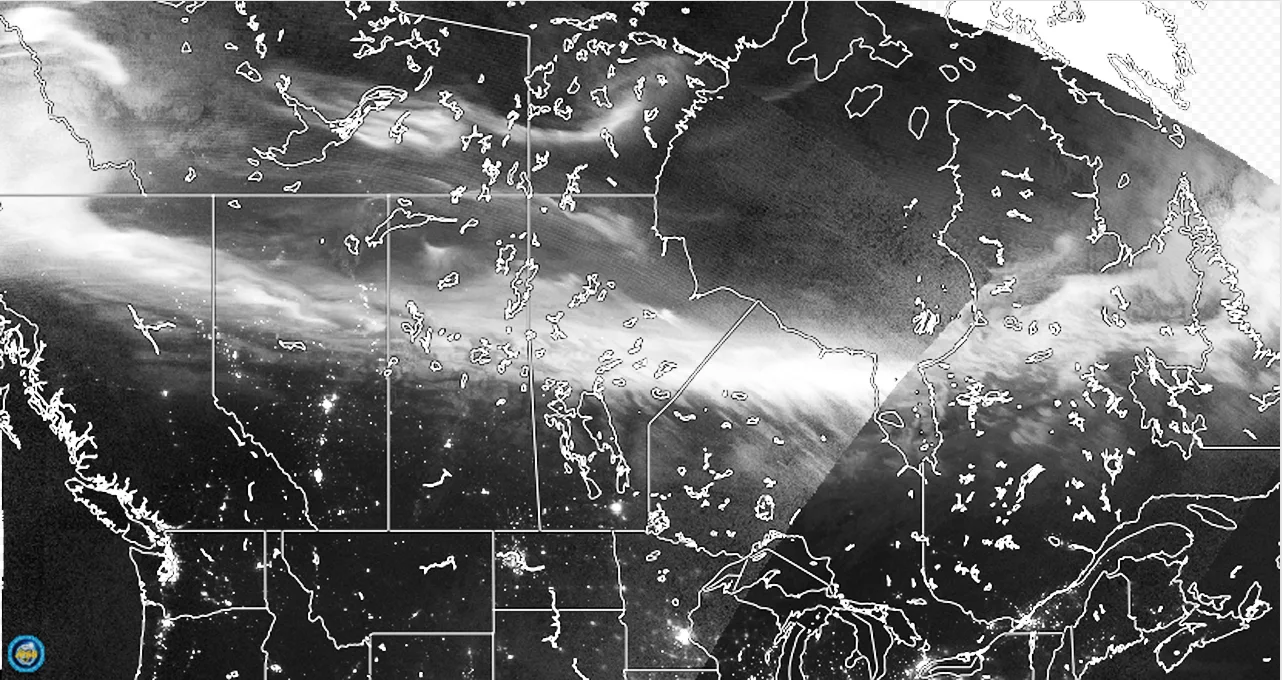
These Day/Night Band views of Earth were taken by the Suomi NPP satellite's VIIRS instrument on the night of October 3-4. They capture a bright band of auroras stretching from Labrador, through northern Quebec, northern Ontario, central Manitoba, Saskatchewan and Alberta, and into northern British Columbia and Yukon. These auroras would likely have been visible down to the U.S. border in the west, the northern Great Lakes, and the Gulf of St. Lawrence in the east. Credit: SSEC/University of Wisconsin-Madison
Round 2 tonight?
Due to the lingering influences of the October 1 CME passing by, combined with the impacts of a changeup in the flow of the solar wind, it appears as though we have another chance to see auroras.
NOAA SWPC is forecasting a potential G2 (moderate) geomagnetic storm for Tuesday evening (Eastern Time), which will likely persist as G1 (minor) storm levels overnight.
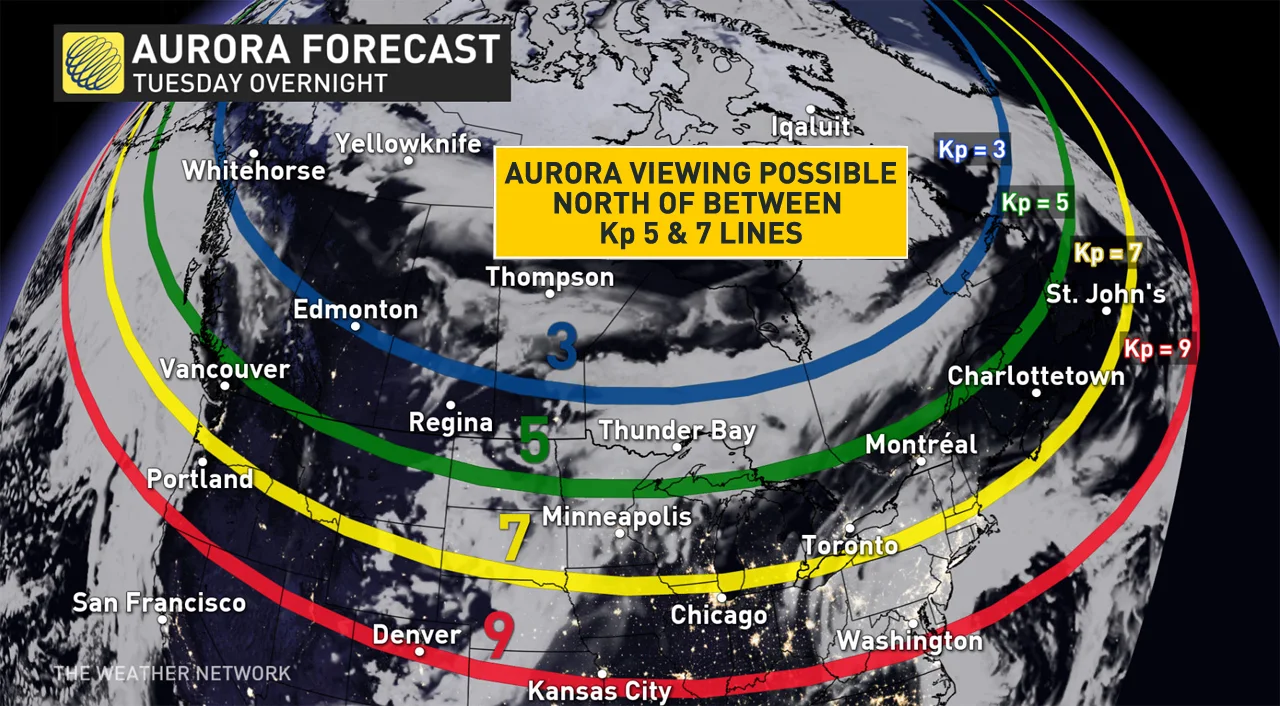
As the cloud forecast indicates (above), the best places for aurora watching tonight will be across Atlantic Canada, southern Quebec and southern Ontario, and Saskatchewan and Alberta. The coloured lines on the map provide an estimate for how far south the auroras could be at any given Kp value. A Kp value of 5 denotes a G1 (minor) geomagnetic storm, while a Kp of 7 is a G3 (strong) geomagnetic storm.
Any auroras that show up from tonight's predicted G2 (moderate) storm will likely be visible north of between the Kp=5 (green) and Kp=7 (yellow) lines.
An Active Solar Cycle
Our Sun goes through an 11-year cycle of activity, with the number of sunspots, solar flares and other space weather ramping up to a maximum, then quieting down to a minimum. The last minumum was at the end of 2019, and activity has been increasing since then.
In fact, according to the International Space Environment Service (ISES) and NOAA's Space Weather Prediction Center (SWPC), this new solar cycle — the 25th we've observed since the late 18th century — is outperforming the forecast issued at the end of Solar Cycle 24.
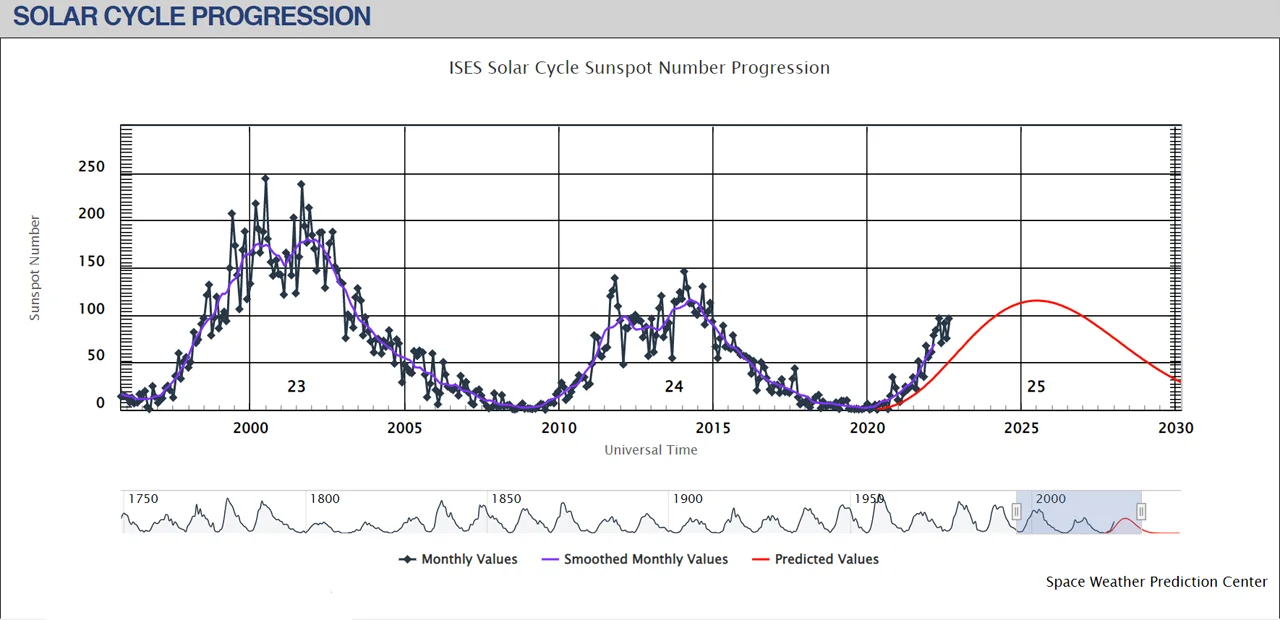
Solar Cycles 23 and 24 are shown in this graph, along with the beginning of Solar Cycle 25, and the forecast (red line). The entire record of solar cycles, going back to 1750, is shown below the main graph. Credit: ISES/NOAA SWPC
As shown above, Solar Cycle 25 was forecast to be relatively weak, perhaps roughly similar to Cycle 24. However, the actual activity seen so far, shown via the black and blue lines, reveals that it is much stronger. Current activity is more in line with how Cycle 23 began.
WATCH: This Alberta duo is celebrated for capturing magic of northern lights
What's going on here?
Solar flares, coronal mass ejections, and geomagnetic storms are different elements of space weather.
Solar flares are explosions of energy from the surface of the Sun. If you look at sunspots with the right camera filter, like those used by NASA's Solar Dynamics Observatory, you will see they are surrounded by bright 'coronal loops'. These loops appear this bright because they have tons and tons of hot, magnetized solar matter swirling around them.
The more chaotic and jumbled up these loops are, the more likely they are to suddenly and violently unravel to form new, simpler connections. When this happens, a significant amount of energy can be released, resulting in what we call a solar flare. Most flares are weak, such as the A, B, and C-class. We begin to take notice when we see M-class and especially the incredibly powerful X-class flares.
Sometimes, as a solar flare blasts out, it can also produce an eruption of matter from the Sun's surface known as a coronal mass ejection (CME). These form into clouds of charged solar plasma that expand out into space from the location of the solar flare, passing through the normal flow of particles from the Sun known as the solar wind. These are often called solar storms.
Also, with the chaotic jumble of magnetic fields that pierce through the Sun's surface, at times, persistent openings can form. Known as "coronal holes" these produce faster streams of the solar wind.
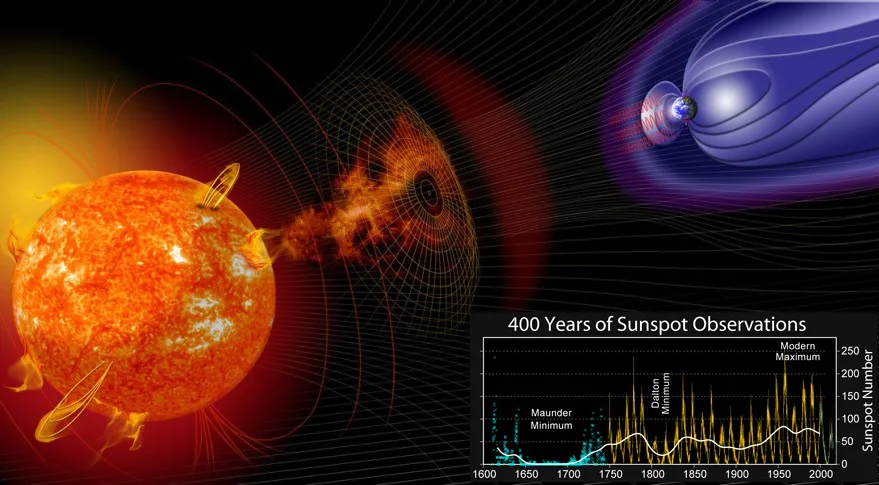
This artist's impression shows the various aspects of space weather, including the last 400 years of the Sun's 11-year solar cycles, all in one graphic. Credit: NASA
A geomagnetic storm occurs when Earth's magnetic field — which is generated by the molten metal in the planet's core — experiences some kind of disturbance.
This usually happens due to changes in the solar wind or a coronal hole high-speed stream sweeping past us. Occasionally (and more frequently towards the 'peak' of a solar cycle), we see these disturbances due to an encounter with a coronal mass ejection.
The disruption causes Earth's magnetic field to fluctuate, and some of the solar particles passing by us become caught in the field and are drawn down into Earth's atmosphere.
Solar particles carry a significant amount of energy. When they collide with atoms and molecules of oxygen and nitrogen in our atmosphere, they transfer some of that energy in the process. The atoms and molecules then dump that excess energy by emitting it as flashes of coloured light, producing displays of the Aurora Borealis and Aurora Australis, aka the Northern and Southern Lights.
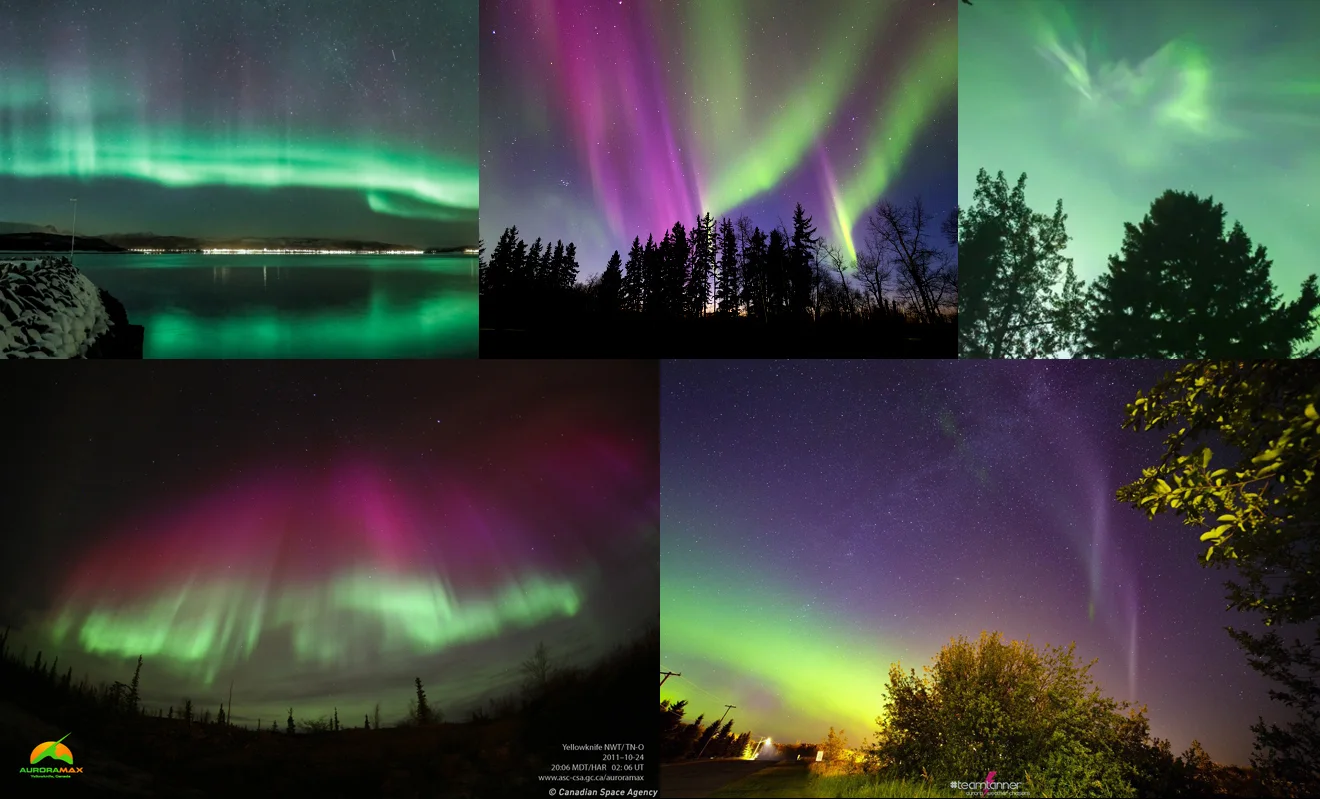
Different types and colour combinations of auroras are shown here. Reds and greens are emitted by oxygen, while blues and pinks are produced by nitrogen. Arcs and pillars (Tobias Bjørkli/PIXELS), Bands and rays (GETTY), Corona (CBC), Rays and Pillars (AuroraMax/CSA), Patches and STEVE (Team Tanner)
Aurora displays are harmless wonders to behold, occurring between 100-400 km above our heads. Still, space weather does have its dangers.
Intense solar flares bombard the planet's upper atmosphere with x-rays, resulting in prolonged radio blackouts. Astronauts on board the International Space Station take shelter in shielded spacecraft until such a flare subsides. Also, orbiting satellites and spacecraft can suffer electrical problems during geomagnetic storms. Exceptionally strong geomagnetic storms can even cause electrical blackouts on the ground.
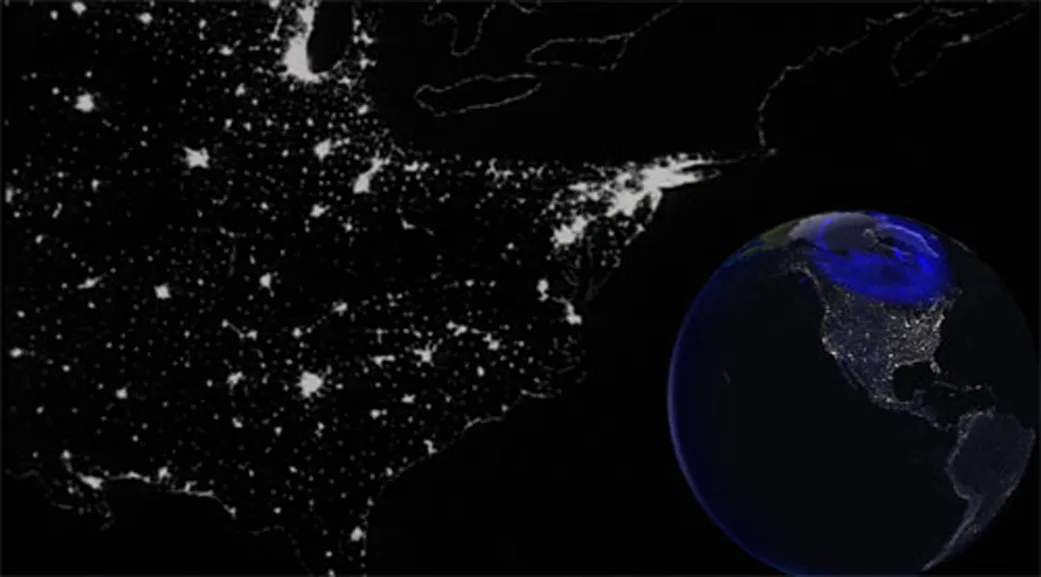
This artist's rendition shows the extent of the 1989 Quebec Blackout, which was caused by an intense geomagnetic storm. Credit: NASA
No danger is expected from this week's space weather events.
Thumbnail image provided by Alberta aurora chasers Tree and Dar Tanner.








